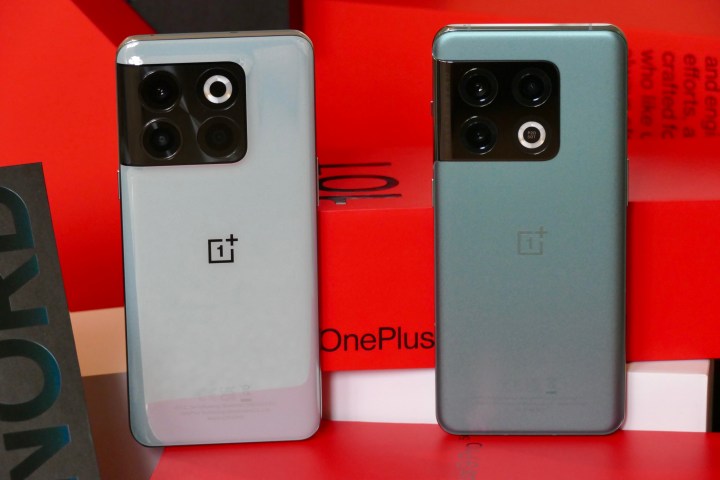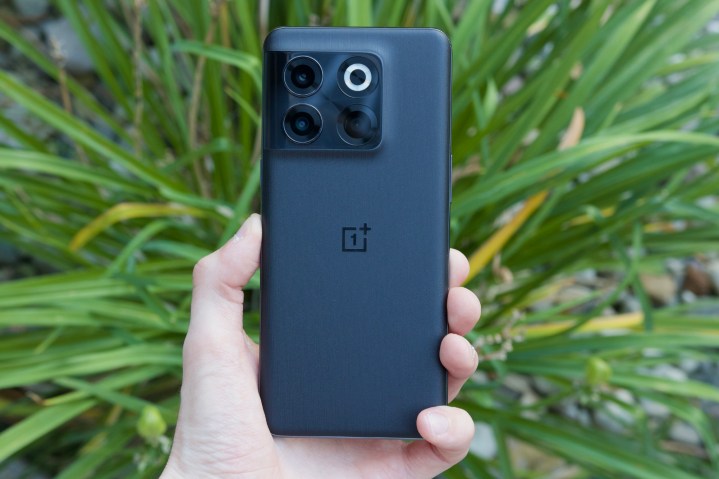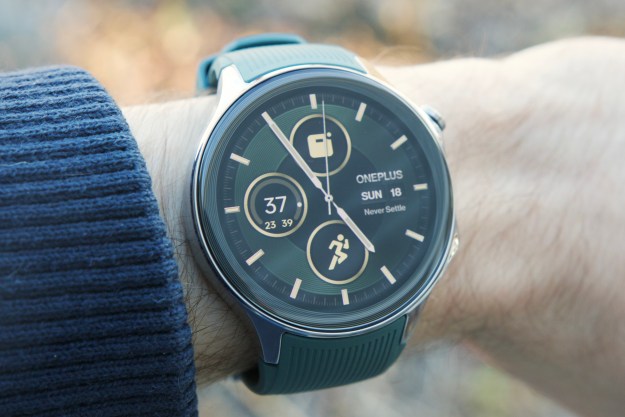OnePlus is ready to put its latest budget flagship – the OnePlus 10T – on the shelves in the U. S. and elsewhere. For an asking price of $650, you get some impressive tricks such as support for 125W charging, the fastest chip on Qualcomm’s menu, and a 120Hz OLED display (among other things). From the looks of it, the OnePlus 10T seems like a true return to form for the brand. I think it’s a compelling retelling of OnePlus’s flagship killer journey in the industry. Especially compared to the 10 Pro from earlier this year.
The quest for making an all-out Android flagship ballooned the price tag past the budget of OnePlus’ most loyal audience. The OnePlus 10 Pro grabbed the spotlight with its Hasselblad cameras and striking design, but its starting price of $899 was tough to swallow. With the OnePlus 10T, a few corners have been cut (read: no wireless charging, no alert slider, and less serious camera hardware), but the $650 asking price is too tempting to miss out on this phone. But only if the OnePlus 10 Pro did not exist.

Or, to put it more accurately, if OnePlus has not lowered the price tag of the OnePlus 10 Pro to $799 on the same day that the OnePlus 10T is introduced for $650. From August 3 onward, the OnePlus 10 Pro is getting a permanent $100 price cut in North America — taking it from $899 to $799. For that asking price, the OnePlus 10 Pro offers a few upgrades that are well worth the $150 gulf.
Where it stings, the OnePlus 10 Pro rises
To start, the OnePlus 10 Pro delivers a Hasselblad-tuned 50-megapixel ultrawide angle camera, which is far better than the OnePlus 10T’s 8-megapixel unit. Plus, the Pro model also offers a telephoto camera with 3.3x optical zoom output instead of a 2-megapixel macro camera.
The selfie camera is also a noticeably bigger 32-megapixel unit on the OnePlus 10 Pro, instead of a 16-megapixel sensor fitted inside the OnePlus 10T. While a curved display might not be everyone’s cup of tea, the OnePlus 10 Pro’s screen is significantly more pixel-dense.
But it’s not all about the specs. There are a few other differences that can make or break the experience of using a high-end phone. Let’s start with the charging situation here. The OnePlus 10 Pro supports an impressive 50W wireless charging. If you can get your hands on the official Warp Charge 50 wireless charger, it can fully top up the OnePlus 10 Pro in just 47 minutes.

Plus, support for reverse wireless charging also ensures that you can juice up wireless earbuds and another phone, as well, using the OnePlus 10 Pro. The OnePlus 10T misses out on that convenience. It supplements that with 125W charging instead of the 65W charging you get on the 10 Pro, but in the real world, it comes down to a time savings of about 10 minutes. Hardly a valid argument to ax wireless charging.
Then there’s the issue of ingress protection and protection against physical damage. The OnePlus 10 Pro is certified for IP68 protection (T-Mobile only) for dust and water resistance, while the OmePlus 10T dials things back with only an IP54 rating. To put it simply, don’t take your OnePlus 10T for taking underwater pictures.
There is also some disparity when it comes to the in-hand feel. Two of my colleagues testing the phone have told me that the OnePlus 10T doesn’t feel as premium as the OnePlus 10 Pro, despite offering a Gorilla Glass 5-protected rear panel. The Moonstone Black has an oddly lined texture on the back, while the Jade Green variant is ultra-glossy and attracts a huge number of fingerprints. Not to mention, the switch from an aluminum frame on the 10 Pro to plastic on the 10T further adds to the cheap in-hand feel.

OnePlus itself admits that the 10T and 10 Pro are two different phones targeting different audiences with varied needs and budgets. “The OnePlus 10T is positioned differently from the OnePlus 10 Pro, a device that is, and continues to be, OnePlus’ option for those who want a well-rounded flagship,” says the official product page for the OnePlus 10T.
One can argue that $150 is still a lot of money, and can be invested elsewhere, like buying one of OnePlus’ own wireless earbuds. But again, you’d be left with a far less premium phone with some notable downgrades for camera and charging experience, among others.
But the equation is not as straightforward as a simple OnePlus 10 Pro versus OnePlus 10T comparison. For smartphone buyers with a $700-800 budget, there are a few other compelling options worth a look. More importantly, the alternatives come from reputed brands like Samsung, Apple, and Google.
The big boys are armed
Let’s start with the Google Pixel 6. At $599, it serves a standout design with a solid pair of cameras, a high-end Tensor chip, support for wireless charging, and an unfiltered Android experience with exclusive Google perks and priority software updates with long-term support commitment.

Next in line is the Samsung Galaxy S22. For $799 – with a free Galaxy Buds 2 or Buds Live earbuds included – this phone offers a solid build, cameras that even beat the OnePlus 10 Pro, half a decade of assured software support, and wireless charging perks. Plus, if you’ve been on the lookout for a small phone that won’t hurt your palms, look no further. For $50 more, the iPhone 13 mini is also a solid small phone.
But if you want a bigger battery, check out the iPhone 13. It offers the power of Apple’s A15 Bionic chip, extremely good cameras that excel at video capture, the fluidity of iOS, solid build, wireless charging support, and long-term software assistance that is far better than any Android phone out there. If you have no qualms with an Apple-certified refurbished unit, there’s a possibility of saving more money.

The point here is that the OnePlus 10T is not a bad device for $650 by any stretch of the imagination. In fact, it marks OnePlus’s return to its true “flagship killer” colors. But more than standing out for itself, it just makes the OnePlus 10 Pro look even better at its new $799 price.
Or maybe, it’s just OnePlus’ clever ploy to upsell the OnePlus 10 Pro, while reserving the OnePlus 10T for folks on an unforgivingly tight budget. It just might work, but the likes of the Google Pixel 6 are definitely going to cut into the latter ambitions.
Editors' Recommendations
- The OnePlus 12R is still one of 2024’s best smartphone deals
- I did a OnePlus 12 vs. OnePlus 12R camera test, and there’s a big difference
- OnePlus just fixed a big issue with the OnePlus Watch 2
- 5 phones you should buy instead of the iPhone 15 Pro Max
- Don’t buy the OnePlus 12 — 6 reasons to wait for the OnePlus 13



